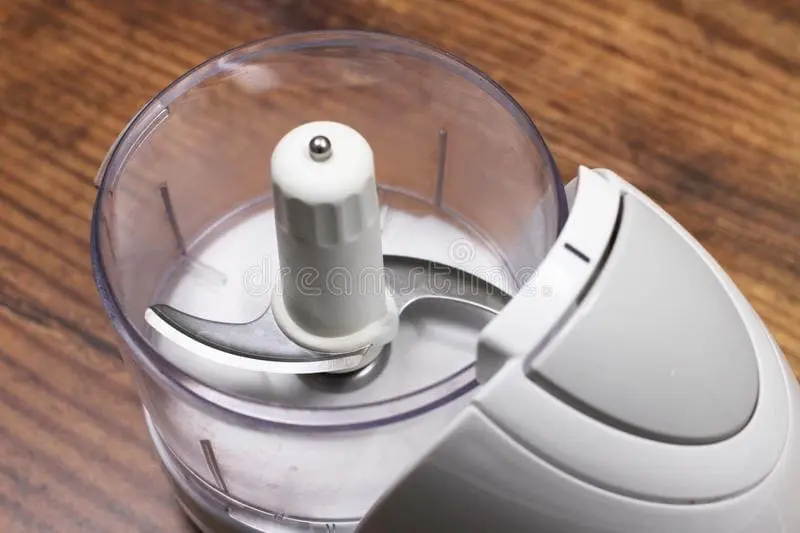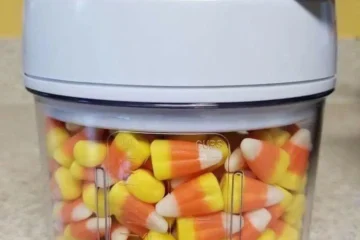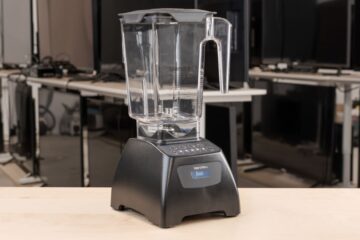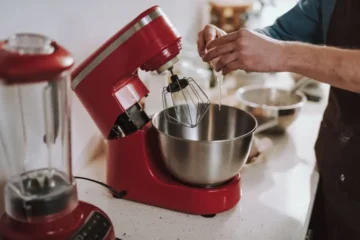Sharp blades are essential for a food processor to function efficiently and produce smooth, uniform results. Dull blades, however, can cause your food processor to struggle, resulting in uneven chopping and blending. This article will show you how to sharpen food processor blades in five easy steps.
If you have experience in cooking, either as a professional chef or as someone who cooks at home, sharpening your food processor blades will make your kitchen work easier and help you save money on costly replacements.
With the simple steps we have outlined, you can extend your food processor’s life and achieve the desired results in no time. Whether you have a small or large food processor, the steps we have outlined are universally applicable and can be done in the comfort of your kitchen. So let’s get started and sharpen those blades!
Can You Sharpen Food Processor Blades?
Sharpening the blades of a food processor can be challenging and is not recommended for most users. Most food processor blades are made of high-carbon stainless steel and are designed to be sharp and durable. Attempting to sharpen them yourself can damage the blades, which could pose a safety hazard.
Additionally, food processor blades are typically designed to be replaced when they become dull rather than sharpened. This is because the blades are often made from a hard and brittle material that can be easily damaged or broken if not handled carefully.
Is it Needed to Sharpen Food Processor Blades?
Sharp blades in a food processor are important for the efficient and effective processing of food. Dull blades can need help to cut through tough ingredients and may even cause the food to become mushed rather than evenly chopped. However, the need for sharpening the blades of a food processor depends on several factors, such as the frequency of use, the types of ingredients being processed, and the overall condition of the blades.
In general, it is a good idea to sharpen the blades of a food processor every 6 to 12 months or as needed to ensure they are working effectively. If you notice that the blades are not cutting as well as they used to, or if they are making a grinding sound, it may be time to sharpen them.
Why are Food Processor Blades Getting Dull?
Food processor blades can get dull for several reasons:
Regular Use
Over time, a food processor’s blades can dull due to regular use. This is normal wear and tear and can be expected as the blades come into contact with different types of foods and ingredients.
Hard Foods
Processing hard foods like nuts, carrots, and other root vegetables can cause the blades to dull faster. The blades can also become dull if they are used to chop ice.
Improper Cleaning
Improper cleaning of the blades can also contribute to their dullness. For example, using harsh detergents or abrasive scrubbers can cause the blades to become dull.
Age
As food processors age, the blades can become dull over time, even if they are not used regularly. This is because the blades may become brittle or develop micro-fractures that can cause them to dull faster.
Does Salt Sharpen Blender Blades?
Salt can be used to sharpen the blades of a blender, but only if you use it effectively.
The best way to do this is by putting salt into a bowl, then adding water until it’s all soaked up. Next, put the blade in there and let it sit for about an hour. After that time has passed, take out your blade and rinse off any remaining salt residue. You should now have a brand-new blade!
How To Sharpen Food Processor Blades?
Here are the steps you can follow to sharpen your food processor blades:
- Unplug your food processor and remove the blades. Refer to your food processor manual for instructions on removing the blades.
- Clean the blades with warm soapy water to remove any food particles, and dry them thoroughly.
- Inspect the blades for any nicks, dents, or chips. If there are any major chips or damage, the blade may need to be replaced.
- If the blades are in good condition, use a sharpening stone or honing steel to sharpen the blades. Hold the stone at a 20-degree angle and run the blade along the stone, moving from the base to the blade’s tip. Repeat this process several times on each side of the blade.
- After sharpening, rinse the blades with water and dry them thoroughly.
- Reassemble the food processor and test the blades by processing a small amount of food.
Sharpening Blender Blades With Salt
Sharpening Blender Blades With Salt is a process many people need to become more familiar with. It is very simple to do and only requires a few ingredients.
To sharpen your blender blades with salt, you will need the following:
– salt
– a bowl
– a spoon
- Pour a small amount of salt into the bowl.
- Insert the blender blades into the salt.
- Move the blender up and down in the salt until the blades are sharpened.
- Rinse the blender blades with water.
It is important to note that not all blades can be sharpened with salt. If your blender blades are not made of stainless steel, then the salt will not be able to sharpen them.
Why Is My Food Processor Blade Not Sharp?
There could be several reasons why your food processor blade is not sharp, including the following:
Wear and tear
Over time, the blade can become dull from regular use and contact with hard foods.
Improper cleaning
If the blade is not cleaned properly, food particles can get stuck on it and cause it to be dull over time.
Rust
If the blade is not dried properly after washing, it can rust and become dull.
Poor quality
If the blade is made from good quality materials, it may be less sharp and durable than it is.
Misuse
If the food processor is used for tasks it’s not designed for, such as grinding hard spices or nuts, the blade can become dull more quickly.
How do you check if the blades are sharp?
To check if blades are sharp, you can visually inspect them for any visible nicks or dull spots. You can also run your finger gently along the blade’s edge to feel any roughness or dullness. Another way to check is to try cutting through a piece of paper or a tomato – if the blade can easily slice through without tearing or crushing, it’s likely sharp.
Additionally, you can perform a “thumb test” by lightly running your thumb over the blade at a 90-degree angle to check for any sharpness. However, be extremely careful when performing this test to avoid injury.
- Can You Beat Egg Whites In A Food Processor? (Is It Safe)
- Can I Use Blendtec As Food Processor? (Discovering The Full Potential)
How To Sharpen Food Chopper Blades?
To sharpen a food chopper blade, you can follow these steps:
- Disassemble the chopper and remove the blade.
- Clean the blade with soap and water, then dry it thoroughly.
- Place the blade on a sharpening stone or a honing rod.
- Hold the blade at a 20-degree angle and move it back and forth across the stone or rod, applying light pressure.
- After a few passes, flip the blade over and repeat on the other side.
- Continue sharpening until the blade is sharp and has a burr on edge.
- Use a honing rod to remove the burr and smooth the edge.
- Reassemble the chopper and test the blade’s sharpness.
How To Sharpen Ninja Food Processor Blades?
You will need a sharpening stone or honing steel to sharpen your Ninja food processor blades. First, unplug the food processor and remove the blade from the processor bowl.
Next, use the sharpening stone or honing steel to sharpen the blade by placing it on the stone or steel at a 20-degree angle and moving it back and forth along the stone or steel. Continue sharpening until the blade becomes sharp. After sharpening, clean the blade with a damp cloth and reattach it to the processor bowl.
Can You Sharpen Cuisinart Food Processor Blades?
Yes, you can sharpen Cuisinart food processor blades. However, it is a complex task and may require professional assistance. Most food processor blades are made of stainless steel, which is a very hard metal and requires specialized tools and techniques for sharpening.
How To Sharpen Blender Blades With Ice?
To sharpen blender blades with ice, you will need some ice cubes, a kitchen knife, and a cutting board. First, place the ice cubes in a bowl and put the kitchen knife in the ice. Next, place the cutting board on top of the bowl.
Finally, turn on the blender and hold the kitchen knife against the ice cubes. The blender will sharpen the blades as it crushes the ice cubes.
How To Sharpen Mixer Blade?
To sharpen a mixer blade, you can follow these steps:
- Unplug the mixer from the power source to ensure safety.
- Remove the blade from the mixer. Refer to the manual for instructions on how to do this.
- Inspect the blade for any visible nicks or dents. If you find any, use fine-grit sandpaper to smooth them out.
- Hold the blade at a 45-degree angle against a sharpening stone.
- Slide the blade back and forth across the sharpening stone, keeping it at a 45-degree angle.
- Repeat the process on the other side of the blade.
- Use a honing steel to refine the blade’s edge and remove any burrs.
- Reinstall the blade onto the mixer.
Breville Juicer Blade Sharpening
If your juicer’s blade is not functioning correctly, it may require a replacement. However, suppose you possess an aged blade that necessitates sharpening. In that case, some individuals recommend utilizing a drill bit to generate a tiny hole through each burr on the blade.
Overall Thoughts On Sharpening Food Processor Blades
By sharpening the blades regularly, you can increase the longevity of your food processor and have it last for years. Here’s hoping you found these instructions useful in getting the old edge back on your blades.
Frequently Asked Questions
Do Ice Cubes Sharpen Blender Blades?
No, ice cubes do not sharpen blender blades. They may help to clean the blades and improve the blender’s performance, but they do not sharpen them.
Can You Sharpen Blender Blades With a Knife Sharpener?
No, it is not recommended to sharpen blender blades with a knife sharpener, as the blades are made of different materials and require a specific sharpening tool or technique. Blender blades can be damaged or dulled if sharpened with a knife sharpener.
What Makes A Blade Sharper?
A blade is made sharper by removing microscopic burrs or imperfections on its edge through honing or grinding. The sharper the edge, the easier it can be cut through materials.
Why Do Eggshells Sharpen Blender Blades?
Eggshells contain calcium carbonate, which acts as a mild abrasive. They help to sharpen the blades by removing any dull edges when blended with food.
Does Aluminum Foil Sharpen Blender Blades?
Yes, aluminum foil can sharpen blender blades by removing any built-up residue or food particles that may dull the blades. This is because the aluminum foil is a soft material that can clean the blades without causing damage. However, it is important to use caution and avoid too much pressure when using aluminum foil to sharpen blender blades, as over-aggressiveness may damage the blades.



